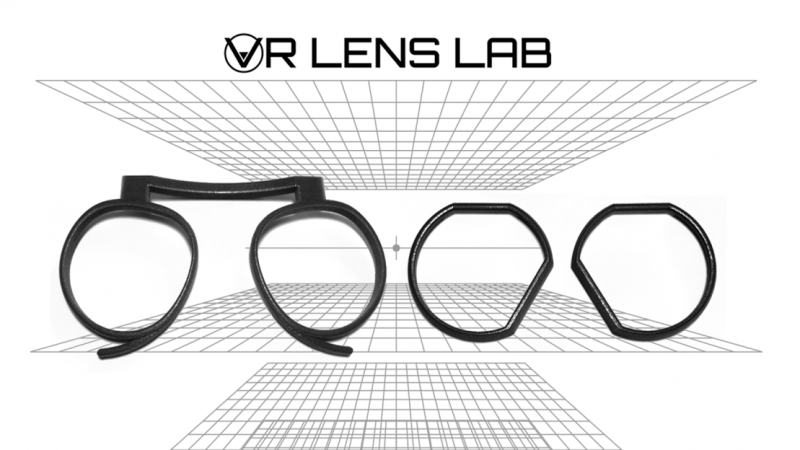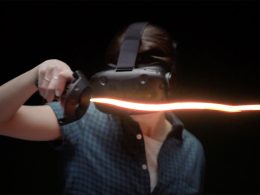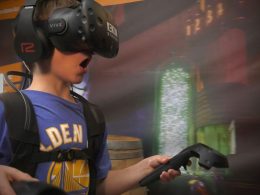Depending on the VR headset, people who wear glasses in virtual reality have several problems at the same time: either it pinches somewhere or you sweat even more under the cyber glasses. In the worst case scenario, a heavier headset such as the HTC Vive will eventually maltreat the side spring of the corrective goggles, as happened to me: suddenly, oh shock, my goggles were lying on the floor with a broken temple when I carefully removed the Vive from my head after a short VR excursion. The same thing could have happened to me in the long run with the narrower Oculus Rift. A solution was urgently needed to ensure that this never happened again. Unfortunately, I have the problem that I am very short-sighted and find it difficult to navigate the real world without visual aids. For short-sighted VR adventurers, there are actually only two aids at the moment:
Contact lenses or corrective lenses with mounting adapters for the VR displays. One provider of such lens inserts is the Stuttgart-based start-up VR Lens Lab. On their website vr-lens-lab.com, you can even order thin glasses that are worn with a strap around the head. You could buy these, for example, if you own several VR headsets at the same time and also dive into the Gear VR from time to time.
The measure of all things
What you absolutely need from VR Lens Lab for the special lenses with the mounting adapters is the current correction data for short-sightedness or long-sightedness. On the order form, you not only have to enter the required spherical value (dioptres) for each eye, but also the axial and cylinder values. The optician was able to explain to me immediately what I had to enter in each field, but the values are also in the spectacle pass. The cylinder value corrects the uneven part of the corneal curvature. The axis value indicates the direction in which the curvature is corrected. You should pay very close attention here to ensure that all the information is correct and that no incorrect minus or plus signs are set. In terms of lens quality, I ordered the new RABS premium lenses for an additional 20 euros.
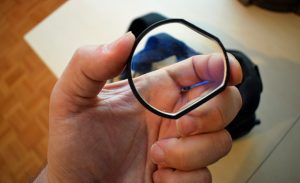
Premium awareness
According to VR Labs, many users were satisfied with the standard lenses. However, for some users, the slightly curved lenses led to prolonged distortion. The curvature of the lenses is actually intended to prevent scratches on the VR displays underneath. I can only speak for myself about the revised RABS premium lenses that I ordered. I also ordered the Blueguard coating option (the blue light filter) for 29 euros to protect my eyes from the bright display light spectra during longer VR sessions. The whole order didn't come cheap after all. Including shipping flat rate and PayPal fees, I paid a total of around 170 euros for the two special lenses with the two Vive adapters. Incidentally, different lenses are required for Oculus Rift, as are the corresponding adapter mounts. As the tracking of the shipment showed, the special lenses are apparently manufactured somewhere in a factory in Thailand. However, it took a relatively short time for me to receive the order. After less than ten days, a hand-sized parcel arrived in my letterbox.
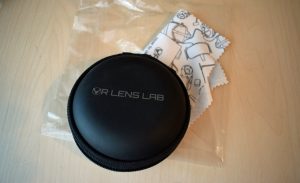
Particularly stylish: a small, round plastic case is even included. It contains the two corrective lenses from VR Lens Lab, which have already been fitted into the two adapter frames. There is also a microfibre cleaning cloth as a little extra.
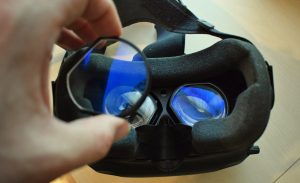
The right cleaning
Folding it into the Vive goggles initially required a bit of dexterity. Before inserting the accessories on both sides, it is advisable to thoroughly and gently clean the screens of the head-mounted display once again to ensure that not a single speck of dust gets stuck between them. Side note: As a matter of principle, I don't clean my VR glasses too often so as not to cause any unnecessary scratches. If I do have to, I usually use a DSLR pressure brush if there is little dust. For intensive cleaning, I use a microfibre cloth, a few dabs of photo lens fluid and just gently rub the VR displays. At first, I was a little afraid of slightly damaging the edges of the VR lenses. The mounts are designed in such a way that, once inserted, they stick to the edges of the VR screens. The best way to do this is to place one side over the original lenses of the VR glasses from below and then carefully "pull" them over the upper edge. This actually has a nice side effect: the sensitive VR displays are also protected from scratches.
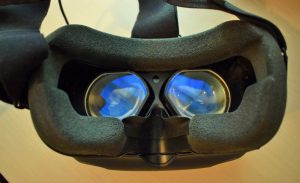
VR without rough edges
In the virtual world, I quickly got used to the VR-Labs vision correction. Almost everything was right straight away. No irritating reflections and blurring in the radial focus. The lateral field of vision was also not distorted. Nevertheless, I had to get used to it slightly at first. For example, at the very beginning, I suddenly had the impression that straight vector lines in the plastic game menu of "Space Pirate Trainer" were slightly curved outwards. There is no loss of comfort whatsoever. Although the display distance between the two Vive screens is set to a very short eye distance for me, it didn't feel as if the additional lenses were taking up more space in the HTC glasses.
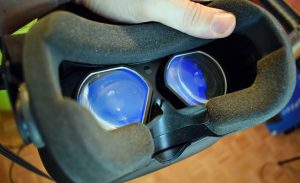
Conclusion
The RABS premium corrective lenses from VR Lens Lab are a worthwhile investment for people with severe short-sightedness. It is almost liberating to immerse yourself in the virtual world with just a pair of glasses for once. The attachments are probably more worthwhile for the Oculus Rift, especially as you can still fit into the HTC Vive depending on your head and glasses. I wouldn't need such a solution for the PSVR, as the HMD can be moved forwards and the helmet doesn't pinch anywhere. A bonus: The overlying lenses are easy to clean and protect the delicate VR displays from scratches.





